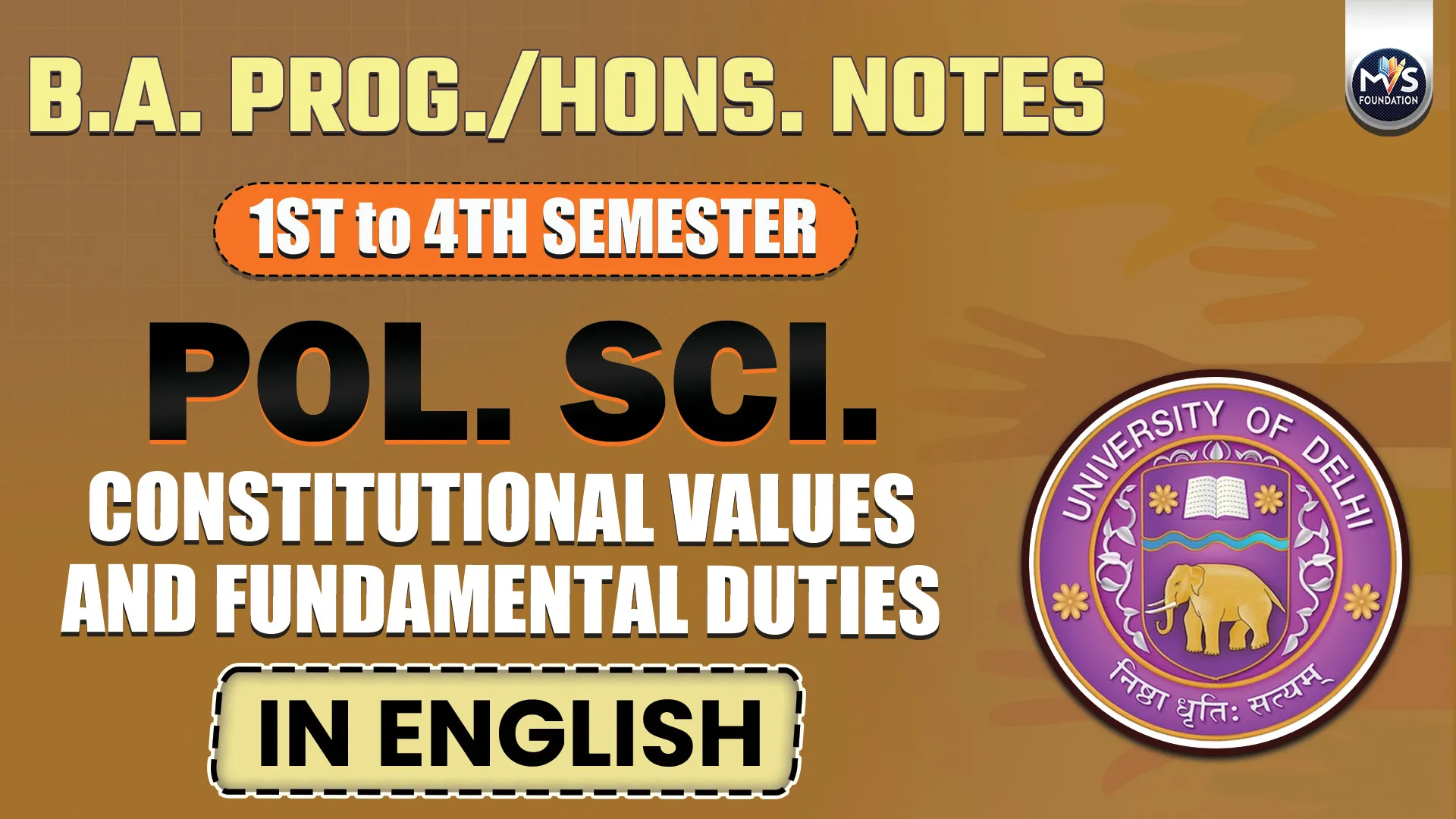
Get in Touch
We will get back to you within 24 hours.
Welcome to MVS Blog

Q.1- What are the salient features of Indian Constitution?
Or
What are the salient features of our Constitution? Answer in brief.
Answer-
Introduction
The Indian Constitution is a written document designed to address the nation's Social, Economic, Political, & Cultural Conditions. Its main goal is to help manage the country effectively during crises. It ensures Secularism, Democratic Governance, & Protection of Fundamental Rights. The Constitution also provides for an independent judiciary and outlines duties for citizens.
Important statements according to scholars on the features of the Indian Constitution: -
The Preamble of the Indian Constitution declares India as a Sovereign, Democratic, Secular, Socialist Republic. Its aim is to provide Social, Economic, & Political Justice to the citizens. The Preamble gives the rights of Equality, Liberty, & Fraternity to all individuals and identifies empowered citizens.
1. Largest Constitution: The Indian Constitution is the largest written constitution in the world, which has been created to face the different provinces, religions, castes, geographical conditions and new challenges in India. Its original constitution had 395 articles, 8 schedules and 22 parts.
2. Rigid and Flexible Constitution: There is a balance between Rigidity and Flexibility in the Indian constitution. The rigidity of the constitution depends on the complex process adopted for amendment.
3. Parliamentary System: India uses a parliamentary system where the Prime Minister and their cabinet are the real leaders, while the President is just a figurehead. The foundations of this system were laid by the Government of India Acts of 1919 and 1935, so people were already familiar with it.
4. Unitary and Federal Structure : The Indian Constitution has both Unitary (Centralized) and Federal (State-Based) systems. Its base is federal, meaning states have their own governments and powers, but during emergencies, it becomes unitary, where the central government's powers increase. Examples of unitary elements include single citizenship, single judiciary, and the appointment of governors.
5. Independent Judiciary and Single Citizenship: The Indian Constitution has established an independent judiciary, which is free to give fair and impartial judgments. Its main role is to resolve disputes between the central government and the states and to protect fundamental rights.
6. Fundamental Rights, Duties, and Directive Principles of State Policy: The Indian Constitution provides Fundamental Rights, which give citizens basic freedoms and protection, and no law can interfere with them. If any law does, the judiciary can declare it unconstitutional.
Conclusion
Therefore, it can be said that the Indian Constitution is written and detailed as well as has been prepared according to the Indian conditions, the above-mentioned features of which make it important. It helps in running the Indian governance system in a systematic manner.
0 Response